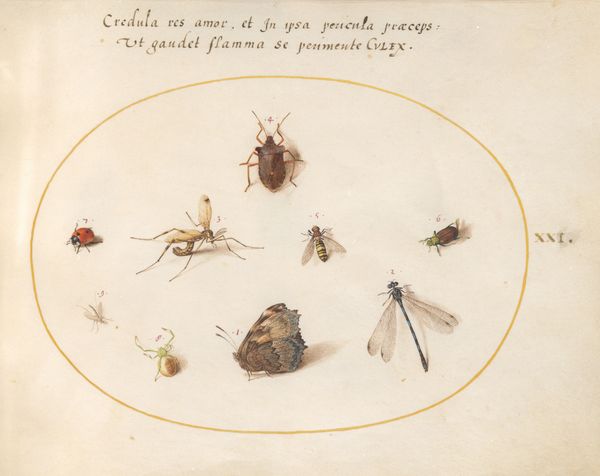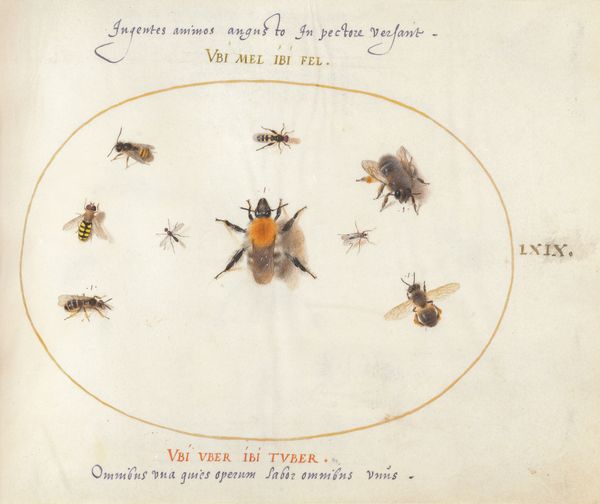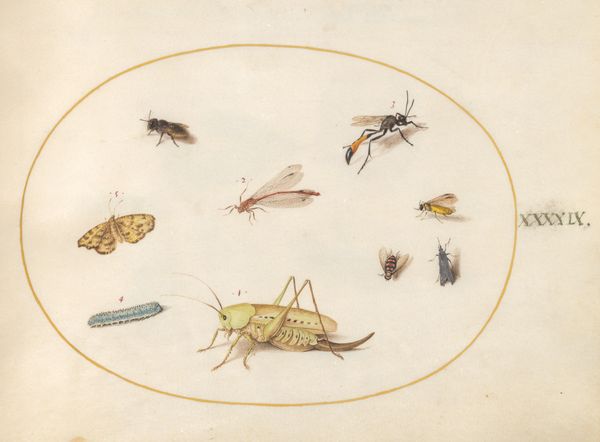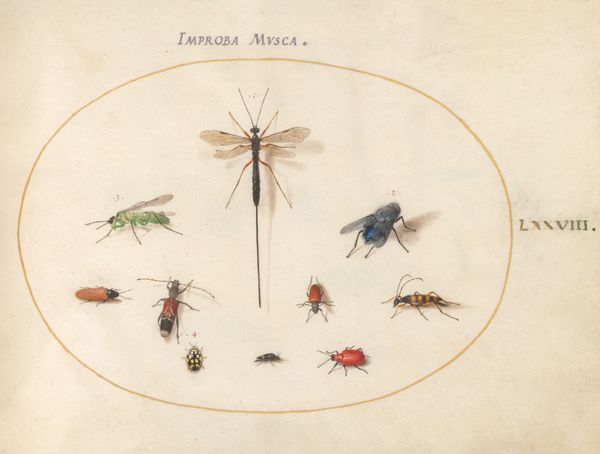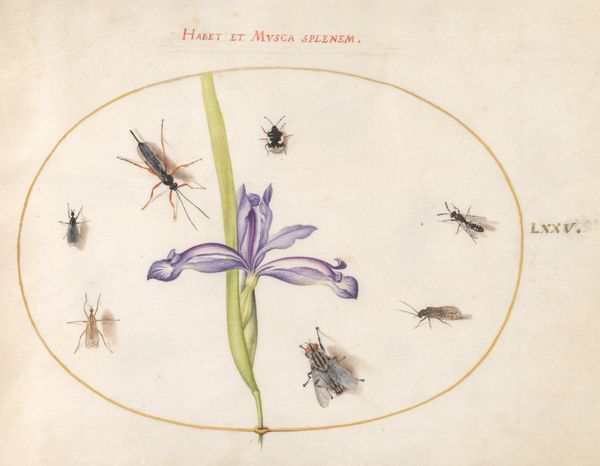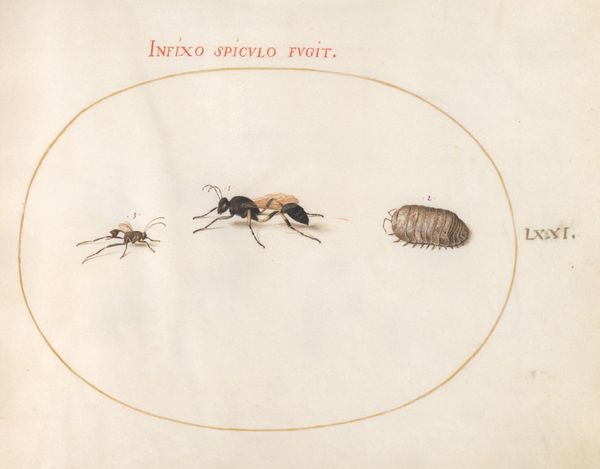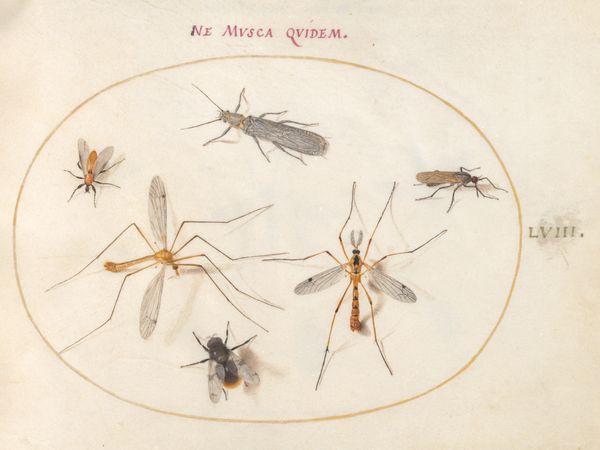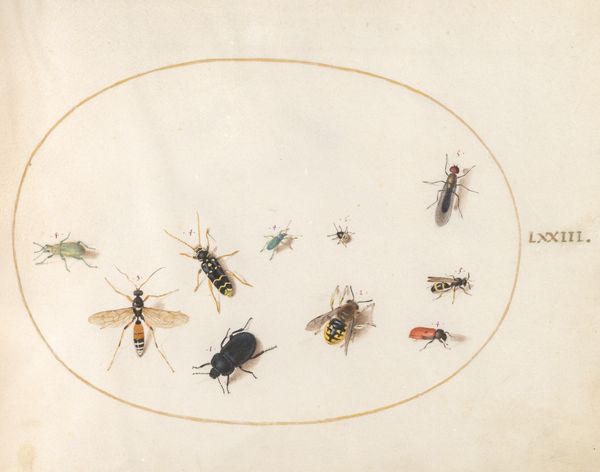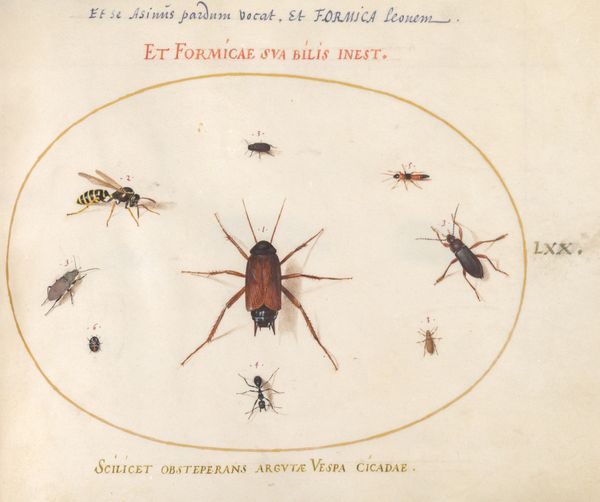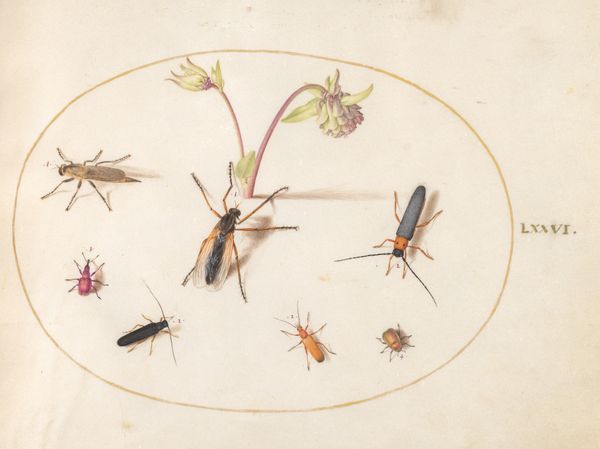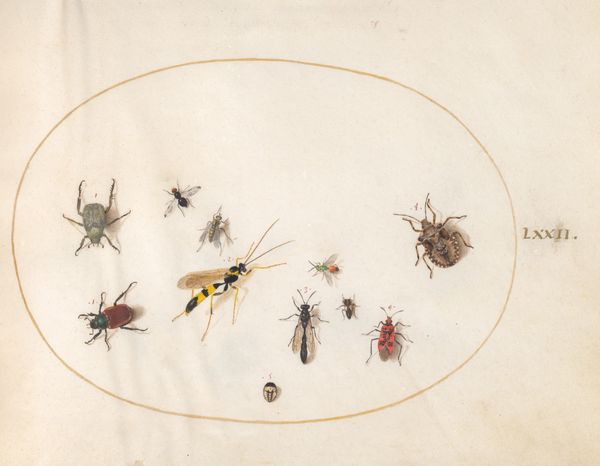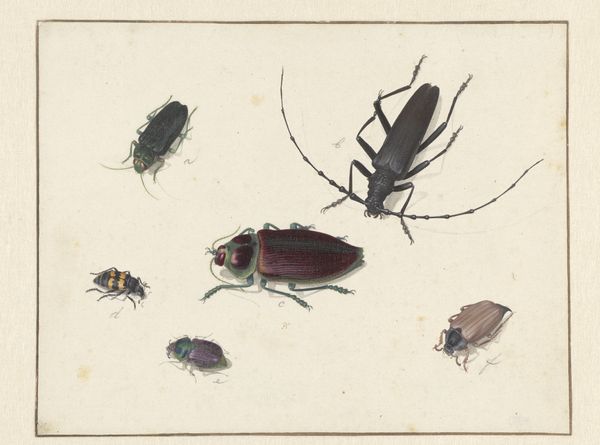
Plate 67: Seven Insects, Including a White Butterfly and a Bee c. 1575 - 1580
0:00
0:00
drawing, watercolor
#
drawing
#
medieval
#
water colours
#
watercolor
#
watercolour illustration
Dimensions: page size (approximate): 14.3 x 18.4 cm (5 5/8 x 7 1/4 in.)
Copyright: National Gallery of Art: CC0 1.0
Editor: Here we have Joris Hoefnagel’s "Plate 67: Seven Insects, Including a White Butterfly and a Bee", a watercolor drawing from around 1575 to 1580. There’s almost a scientific precision to how each insect is captured. How would you interpret this work? Curator: From a materialist perspective, let's consider the very process of its making. Watercolour, a readily available medium, suggests a connection to a broader, perhaps bourgeois, market interested in observing nature. The precise lines indicate the labor invested and also point to a rising merchant class with more time for art consumption. It wasn’t some large-scale fresco meant for a patron, but more of a close study. Notice anything particular about it? Editor: It feels less religious and more grounded in everyday observation compared to much of the art of that time. Curator: Exactly! And look closer at what’s represented: insects. Not kings, not saints, but often-overlooked creatures. Doesn't it challenge traditional ideas of what’s worthy of artistic representation? This shift towards everyday subjects reflects an interest in the material world rather than the divine, connecting art more closely to human experience. Who owned something like this? Editor: Someone interested in science, maybe a collector? Curator: Precisely! This also emphasizes art as a commodity, created through labor, purchased for display or study, contributing to the flow of capital within society. Even this seemingly simple illustration reflects shifts in the production, consumption, and perception of art itself. Editor: I hadn't considered it that way! I was focused on the image, not what it represented in its time. Curator: See? Art never exists in a vacuum. Every artistic choice, every material used tells a story of production, labor, and social dynamics.
Comments
No comments
Be the first to comment and join the conversation on the ultimate creative platform.
